Drumdartan Glebe
Houses within 15km of this house
Displaying 32 houses.
Houses within 15km of Drumdartan Glebe
Displaying 32 houses.
| House name | Description | |
|---|---|---|
| Woodford | Woodford was the residence of Robert J. Gore at the time of Griffith's Valuation when it was valued at £15. In 1814 it was occupied by John Gore. Both Taylor and Skinner and Wilson also record it as a seat of the Gore family in the 1780s. The house at Woodford Demesne, described as "formerly the residence of the Rev. Gore" was "formerly a genteel residence but now in a ruinous state" at the time of the first Ordnance Survey in 1835. Lewis records it as the seat of Ormsby Gore in 1837. In 1906 it was the property of Emily Upperton and was valued at £19. The National Inventory of Architectural Heritage states that it retains little original fabric but much of the estate architecture, including the site of the walled garden survives. There is also an earlier castle at this site. |

|
| Corduff House | The National Inventory of Architectural Heritage estimates that Corduff House was built c.1780. William Penrose was occupying the house at Corduff, barony of Carrigallen, at the time of Griffith's Valuation when it was valued at £8. Corduff House is recorded as the seat of the Penrose family by Lewis in 1837. In 1814 it was the residence of George Percy. The house is still extant and occupied. |
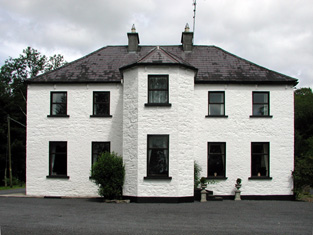
|
| Willowfield | Alexander Percy was occupying the house at Aghatawny, known as Willowfield, at the time of Griffith's Valuation when it was valued at £10.Lewis records it as a seat of the Percy family in 1837. In 1814 it was the residence of William Shanley. Both Taylor and Skinner and Wilson also record it as a seat of the Shanley family in the 1780s. The building is still extant. | |
| Garadice | John Percy was leasing the house at Garadice, barony of Carrigallen, from the representatives of William Percy at the time of Griffith's Valuation when it was valued at £15. In 1814 it was noted as a residence of the Percy family. Lewis records it as the seat of W.C. Percy in 1837. In the 1780s both Taylor and Skinner and Wilson noted Garadice as a Percy residence. The ITA survey recorded it as much deteriorated in the 1940s. It also mentions the existence of a second house belonging to the Percy family in the townland of Carrickmakeegan. The buildings are still extant at Garadice. | |
| Riversdale | Matilda Shanley was leasing Riversdale House at Corrachole to William Lawder in the 1850s when it was valued at £12. In 1837 Lewis records it as the seat of the Shanley family. It is still extant and operates as a farm guesthouse. |

|
| Lawderdale | The National Inventory of Architectural Heritage survey states that Lawderdale was built in the early 1850s and has a tower which was added in the 1870s. At the time of Griffith's Valuation it was the property of William Lawder and was valued at £18. In 1906 it was the property of James Ormsby Lawder and was valued at £30. It is still extant. |

|
| Mough | Mough was one of the original properties held by the Lawder family from their arrival in the Leitrim area. Burke suggests that Mough afterwards became Lawderdale but map evidence would suggest that they were separate though adjacent properties. At the time of Griffith's Valuation the house was valued at £18. | |
| Laheen | In the 1780s both Taylor and Skinner and Wilson recorded Laheen as a seat of the Peyton family. Lewis also records it as a Peyton residence. At the time of Griffith's Valuation it was being leased by Richard Peyton to Michael Fitzgerald and was valued at £15. The original Laheen house is not extant though a house and extensive farm buildings remain at the site. | |
| Keonbrook | In 1783 Taylor and Skinner record Kanebrook but not the name of the family whose residence it was. Keonbrook, the residence of the Keon family, was occupied by John F. Tottenham in 1856. In 1906 it is recorded as the property of Bridget Mollahan and was valued at £14. A modern house has been constructed in the demesne. | |
| Newbrook | At the time of Griffith's Valuation Michael Costello was leasing Newbrook, valued at £7 from the Keon family. Lewis records Newbrook as a residence of the Keon family in 1837. in 1814 Ferdinand Keon had his address at Newbrook, Carrick-on-Shannon. The sale notice of 1878 mentions the existence of Newbrook House which "with some expenditure might be made a most desirable residence for a gentleman's family". | |
| Loughscur | Loughscur was originally a seat of the Reynolds family but later passed into the ownership of the Peyton family through marriage. In 1894 Slater refers to it as the seat of James Reynolds Peyton. However, this may refer instead to the Peyton property at Laheen. | |
| Annadale | At the time of Griffith's Valuation, William Slack was leasing the house at Kiltubbrid from the Ecclesiastical Commissioners when it was valued at £11. Lewis also records it as the residence of the Slack family. According to the National Inventory of Architectural Heritage survey, Annadale House was built c.1760. It is still extant and occupied. |

|
| Driney | In 1906 the mansion house at Driney was valued at £31. At the time of Griffith's Valuation it was occupied by Rev. Walter C. Peyton and was valued at £10. In 1814 it was the residence of Walter Peyton and was also recorded as the seat of the Peyton family in 1837. It was also recorded as a seat of the Peyton family by Taylor and Skinner in 1783. There is no evidence of a house at this site now. |
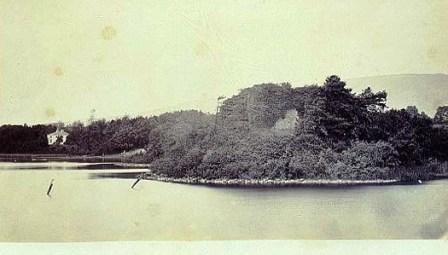
|
| Aghacashel | According to the National Inventory of Architectural Heritage Aghacashel House was built c. 1800. At the time of Griffith's Valuation it was occupied by Charles Rolleston and was valued at £14. In 1837 Lewis records it as a Johnston residence. In 1814 it was the home of Joseph Johnston. By 1906 it was still valued at £14 and was the property of Thomas Guckian. It is still extant. |
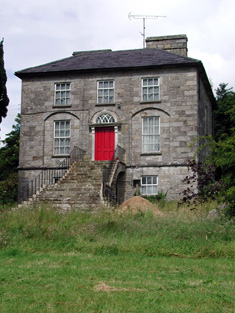
|
| Glasdrumman | The property at Glasdrumman in the parish of Fenagh, belonging to William Lewis, described as "in chancery" was leased to John Murphy in 1856 when it was valued at £8. It is still extant and occupied. |
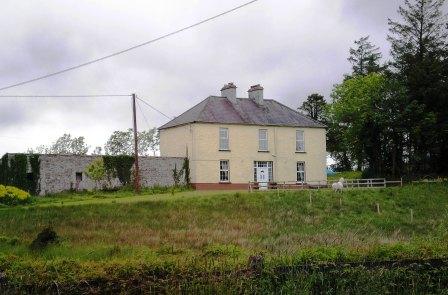
|
| Fenagh Glebe | Rev. George Beresford held the Glebe at Fenagh, from the Ecclesiastical Commissioners at the time of Griffith's Valuation when it was valued at £16. The Buildings of Ireland survey states that the house was built c. 1829. It also records that the nearby church, built c.1790, was extended in the 1850s by the Pack Beresford family. Both buildings are still extant and in use. |

|
| Blackrock | In 1906 the house at Blackrock was owned by John W.L. Birchall and was valued at £10. Arthur J.V.L.Burchall was occupying the house at the time of Griffith's Valuation when it was also valued at £10. There is still an occupied house at this site. | |
| Letterfine/Letterfyne | Letterfine was occupied by the representatives of Mary Anne McNamara in the mid 1850s. In 1814 it was the address of Tobias Peyton. Taylor and Skinner and Wilson both record it as a seat of the Reynolds family in the 1780s. It is labelled Letterfine House on the 1st edition Ordnance Survey Map but is not visible on the later 25-inch edition. In 1943 the Irish Tourist Association survey recorded no trace of the house. | |
| Cottage Vale | At the time of Griffith's Valuation Charles Ensor was leasing a property valued at £10 at Drumdarkan, barony of Mohill, to George West. There is still an occupied house, part of a large farm, at this site. |

|
| Mount Allen House/Lough Allen Cottage | Lewis records "Lough Allen Cottage" as the seat of Hugh McTernan in 1837. At the time of Griffith's Valuation, this townland was leased by Richard H. Gorghes from Arthur O'Conor. It included a house valued at £7 10s. This building is labelled Mount Allen House on the 25-inch Ordnance Survey map of the 1890s. | |
| Boeeshil House | At the time of Griffith's Valuation William Shanley was leasing a property at Boeeshil, barony of Carrigallen, incuding a house and corn mill, valued at £20, from the Percy estate. There are three mills shown at the site on the 1st edition 6" OS map, including a corn, bleach and flax mill. Lewis records this property as belonging to the Gerard family. | |
| Drumkilla or Mohill Glebe | At the time of Griffith's Valuation Rev. Arthur Hyde was leasing the Glebe at Drumkilla, valued at £22, from the Ecclesiastical Commissioners. | |
| Drumliffen Glebe | At the time of Griffith's Valuation Rev. Wm. Percy was leasing a property valued at £12 at Drumliffen Glebe, barony of Leitrim, from the Ecclesiastical Commissioners. The property is still extant and part of a farm. | |
| Glebe Mohill | At the time of Griffith's Valuation, Rev. Arthur Hyde was leasing the glebe house at Drumkilla, barony of Mohill from the Ecclesiastical Commissioners. It was then valued at £22. | |
| Templeport House | Templeport House was built about 1860 on part of the Dobbin estate. It is situated north east of Templeport Lough and may occupy the site of a former herd’s house. Robert Roycroft of Templeport House died in 1881, aged 64 and was buried in Templeport graveyard. |
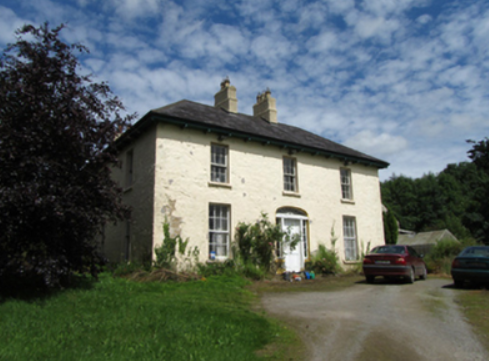
|
| Tircahan Lodge | Francis Hassard of Tircahan Lodge, also known as Rockwood, is recorded in a sale rental of the Encumbered Estates Court in 1852. He sold part of his estate to Robert Hutton. In the mid-19th century Tircahan Lodge, a building named on the first edition six inch Ordnance Survey map (publ. 1837), was occupied by Henry Breen, who held the house, valued at £8, from Robert Hutton. It is located south of Swanlinbar. In the 1890s the original lodge was replaced by a larger more compact building which still stands today although now derelict. Robert Hutton JP lived here with his family in the early 20th century. In 1906, Georgina Hutton was recorded as the occupier when the 'mansion' house was valued at £17 for rates. | |
| Bawnboy House | According to Chris Maguire Bawnboy House was built about 1790 by John Enery see http://www.bawnboy.com/History-Heritage-Folklore/pages/bawnboy-84.html In 1814 Nathaniel Sneyd was occupying the house and by the 1850s John D. Rochfort was owner and occupier. The buildings were valued at £12.15.0. By 1876, the house was occupied by William Johnston and in the early 20th century Bawnboy was the home of Robert Henry Johnstone and family. Mulligan records this house as derelict. The Lawders also held Corr [Cor?] and Bawnboy, see GO MS 182: 96-113 in the National Library. |
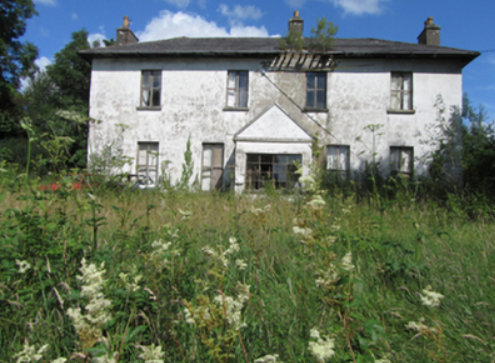
|
| Brackley Lodge | Located very close to the shore of Brackley Lough and originally known as Brackley Lodge, the house was named on the first edition six inch Ordnance Survey map (publ. 1837). The 25 inch map of the early 20th century records its name as Brackley House. The present smaller house replaced the original building in the 1920s. Brackley was the home of John Finlay in the 1850s and in 1876. The house belonged to the Reverend John Finlay of county Carlow but was not occupied by the family at the time of the 1901 census. |
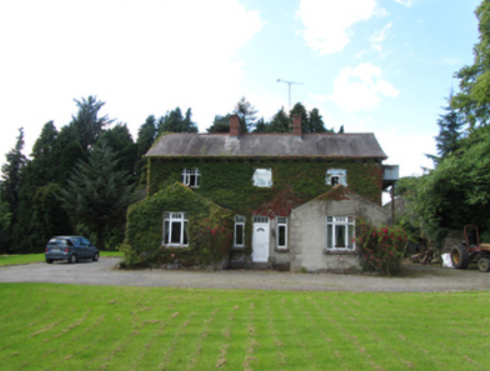
|
| Corville | The Lawder family may have lived in this townland in the early 18th century. Described by the National Inventory of Architectural Heritage as a late Georgian house, Corville is named on the first edition six inch Ordnance Survey map (publ. 1837), located in a small demesne. Like Brackley Lodge it was the home of members of the Finlay family. It was valued at £23.5.0. in the mid-19th century and was occupied by George Finlay who held the property from Sir Thomas Finlay. Francis Finlay, minor, of Corville is listed in the landowners of 1876. By the beginning of the 20th century Corville was the property of Robert Henry Johnston. Thomas Flynn and family were caretaking the house for him in 1901. This house is still well maintained and occupied. |
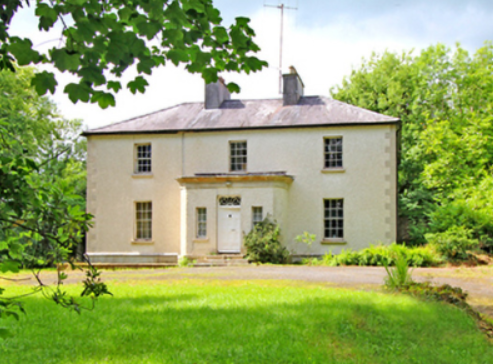
|
| Woodville (Templeport) | Woodville was another Finlay home, built to the north east of Corville circa 1840s. At the time of Griffith’s Valuation it was valued at £12 and was occupied by Francis Finlay who held it from George Finlay. A building still stands on this site. | |
| Lissanover | Members of the Hume family of Lisanober or Lissanover, Co Cavan (and of Castle Irvine, Co Fermanagh) are recorded in the 18th century, see GO MS 141: 102-104. Robert Hume of Linover died in 1777 and was buried in Templeport graveyard. In the 1830s J. Roycroft was resident at Lisnover and in the 1850s Robert Roycroft held the property from William Blachford. It was valued at £12.10.0. for rates. This house was demolished by the early 20th century. | |
| Owendoon | There was a house called Cottage in this townland marked on the first edition six inch Ordnance Survey map (publ. 1837). Owendoon was built nearby in the late 1850s by George Henry L’Estrange. By the early 20th century Edward Langford Hunt was resident. He died in 1907 and W.M. Hunt of Owendoon in 1925. Owendoon now functions as the Jampa Ling Buddish Centre. |
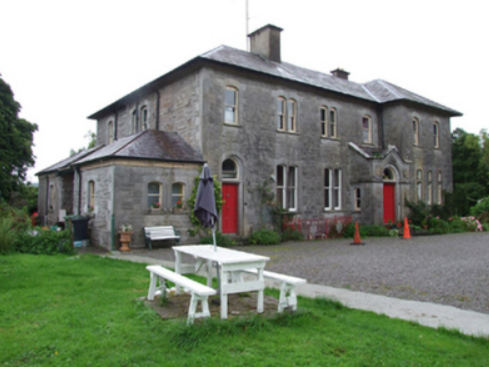
|

